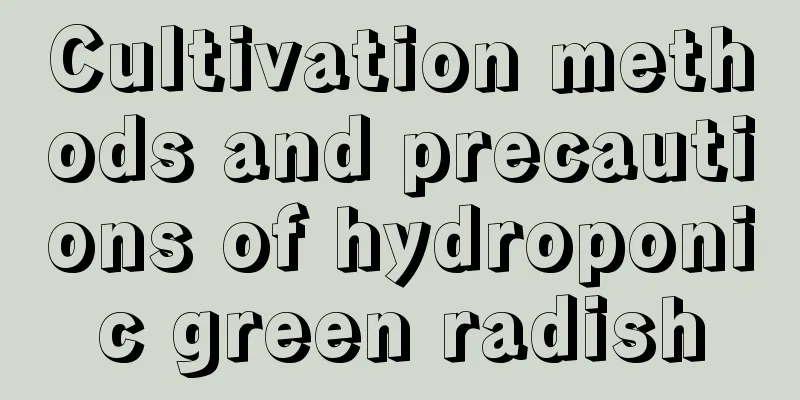Is Gloxinia easy to grow? Methods and precautions for growing Gloxinia potted plants at home

|
Gloxinia prefers a warm, humid, semi-shaded environment and cannot tolerate strong direct sunlight. Generally, it is suitable for planting in loose, fertile, humus-rich, slightly acidic soil. Its suitable growth temperature is 20-25℃. It is not cold-resistant and will enter dormancy when the temperature is below 5℃ in winter and semi-dormant when the temperature is above 30℃ in summer. Is Gloxinia suitable for home cultivation?Gloxinia is easy to grow. It is relatively simple to grow. Generally, it can be grown in a rough manner. It does not require much effort and can produce colorful flowers. Therefore, it is loved by many people who love to grow flowers. It is better to keep Gloxinia at home . It is highly ornamental, has excellent decorative effects, and can absorb harmful gases and improve air quality. Secondly, Gloxinia flowers can also remove dust, making our home environment more refreshing, and can also relieve stress and play a role in calming the mind. Moreover, Gloxinia flowers can be grown indoors. They are non-toxic plants with a fresh and pleasant fragrance, so you can plant them at home with confidence. And they also have a powerful effect of purifying the air, which can make the air at home fresh, so you can grow them with confidence. Cultivation methods and precautions of Gloxinia1. Lighting Gloxinia does not require much sunlight and can be grown anywhere. It is best grown on a balcony or windowsill where it can receive scattered light. However, it cannot be exposed to the sun, otherwise it will burn the leaves and affect the normal growth of the plant. 2. Watering Gloxinia likes a moist growing environment, but it cannot grow in a moist pot soil for a long time. In summer, you can water it 1-2 times a day, in spring and autumn, you can water it every 2-3 days, or when it is dry, you can control the amount of water and reduce the frequency of watering in winter when the weather is cold. 3. Fertilization If you want to grow Gloxinia well, you can fertilize it every 10-20 days during the growth period, and apply appropriate amount of topdressing in the early stage of flowering. When applying topdressing, use a thin organic liquid fertilizer to promote the plant to absorb nutrients better and produce more flower buds. Fertilization needs to follow the principle of thin fertilizer and frequent application. 4. Repotting If it is a newly bought Gloxinia, we can usually wait until it blooms before repotting it. When we repot Gloxinia, the flowerpot we use does not need to be too big. Because a flowerpot that is too big is easy to water, and water will accumulate and the roots will rot. And the material of the flowerpot is preferably a permeable and breathable clay pot. Although such a flowerpot is not beautiful, it is better for growing flowers. 5. Soil preparation To grow African gloxinia flowers, you can use loose, breathable, well-drained, slightly acidic soil. Generally, we can use a mixture of leaf mold, peat soil, and perlite for cultivation. |
<<: Is sunflower easy to grow? How to grow sunflower and when is the best time to plant it?
>>: Is geranium easy to grow? How to grow geranium so that it blooms the most?
Recommend
Does Daphne koreana prefer shade or sun? How to maintain?
Daphne koreana is a very fragrant ornamental flow...
Yushu growth environment conditions and characteristics
Yushu Growth Environment Conditions and Requireme...
Do succulent leaves need to be buried after they sprout (do leaves need to be buried with soil after they grow roots and sprout)
Do succulents need to be buried after they sprout...
How to make okra, how to make okra delicious
1. Cold salad When making cold dishes, prepare th...
How to plant plum blossom seeds
1. Seed Collection and Processing We should colle...
Can Epiphyllum be grafted onto a cactus? Can it be grown indoors?
1. Is it possible to graft cactus? Epiphyllum can...
How to grow freesia in autumn
1. Breeding conditions 1. Soil: It prefers a nutr...
When did the American hazelnut bear fruit?
Introduction to American Hazelnut American hazeln...
Can spring orchids bloom in winter?
Normal flowering period The normal flowering peri...
Can the golden-edged agave be placed indoors?
1. Can be placed indoors This plant is a high-qua...
The role of spider plants
1. Decorative function Chlorophytum is called the...
Is Panax notoginseng easy to raise? Indoor cultivation methods and precautions
Is Panax notoginseng easy to raise? Panax notogin...
How to care for the Dingdangjin succulent and what kind of soil is best for planting it
Dingdangjin is a red lotus bridal variety with lo...
How to change the soil and pot of the peace lily
The role and requirements of changing soil and po...
The efficacy and function of Portulaca oleracea
The efficacy and function of Portulaca oleracea M...









